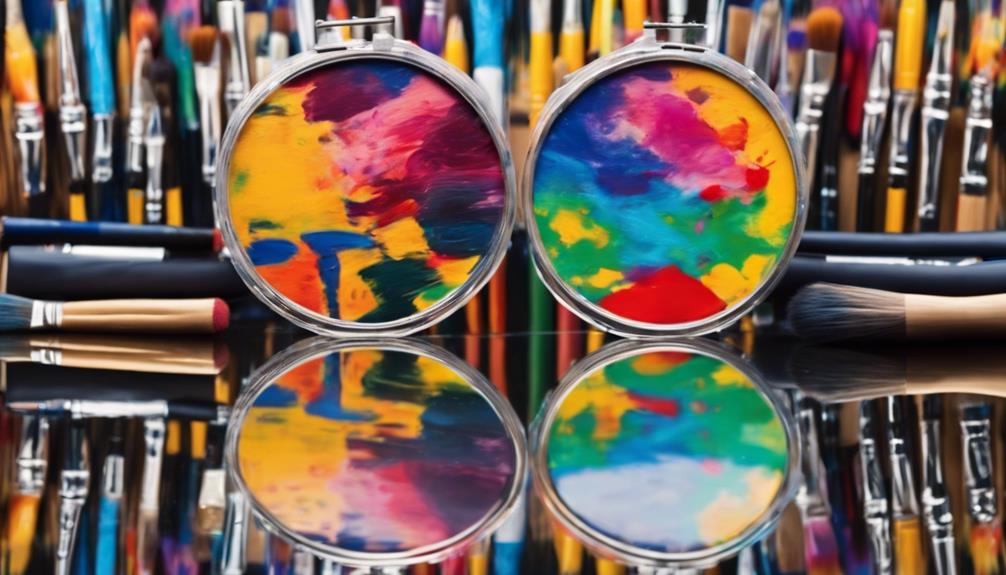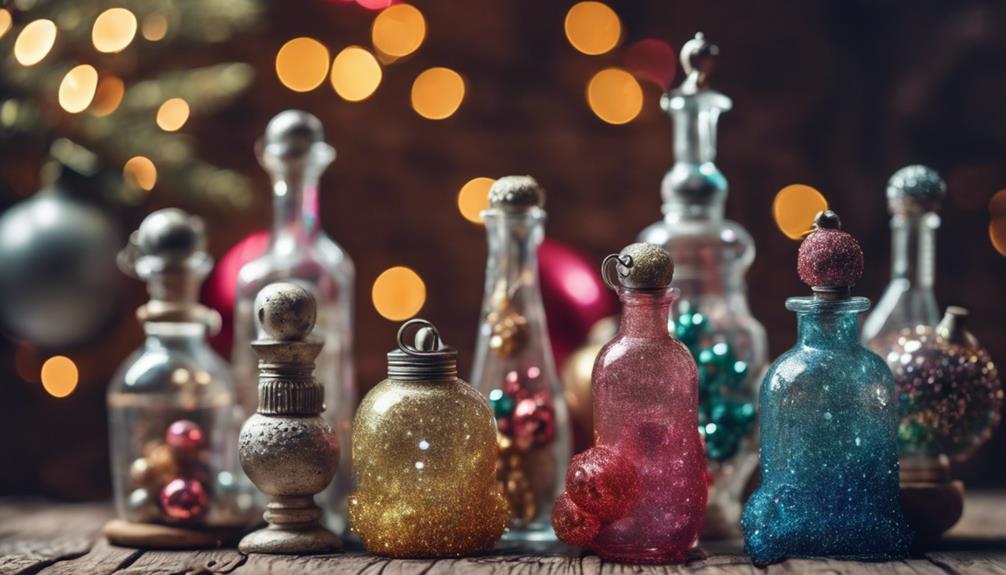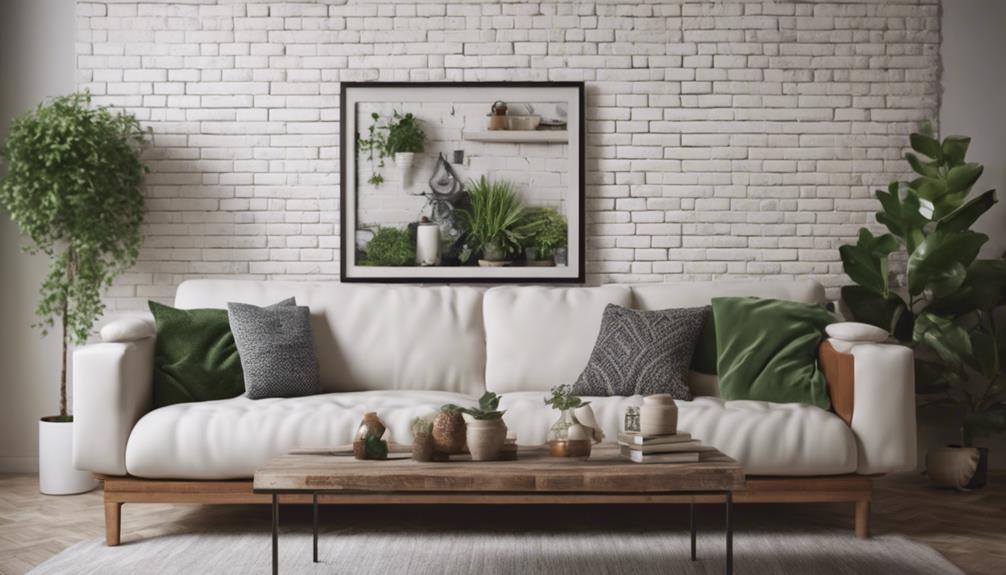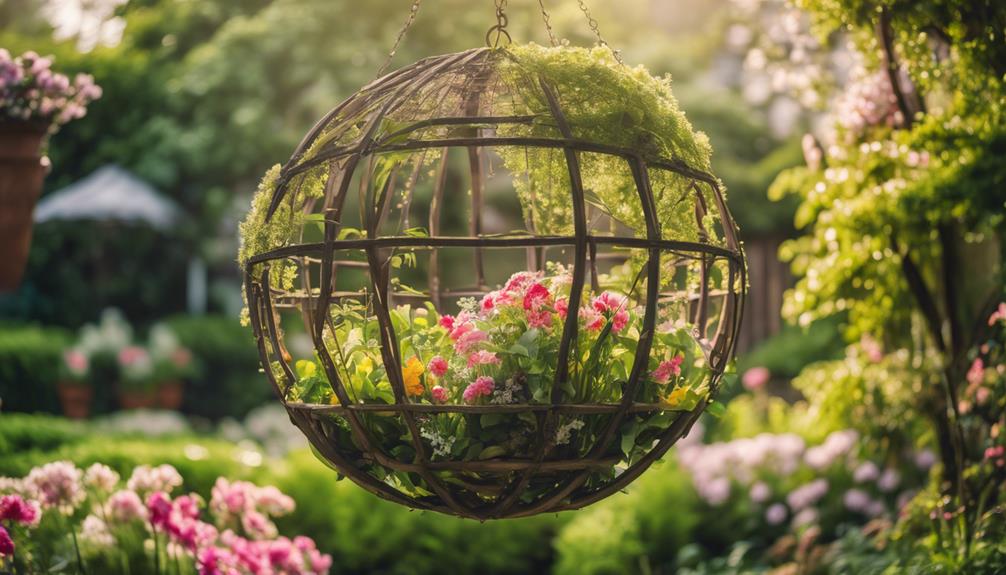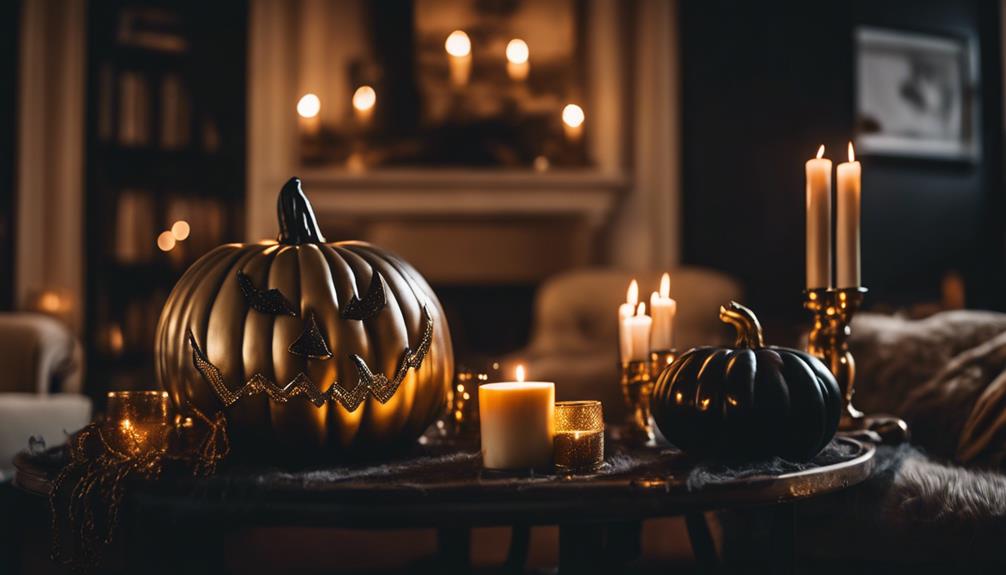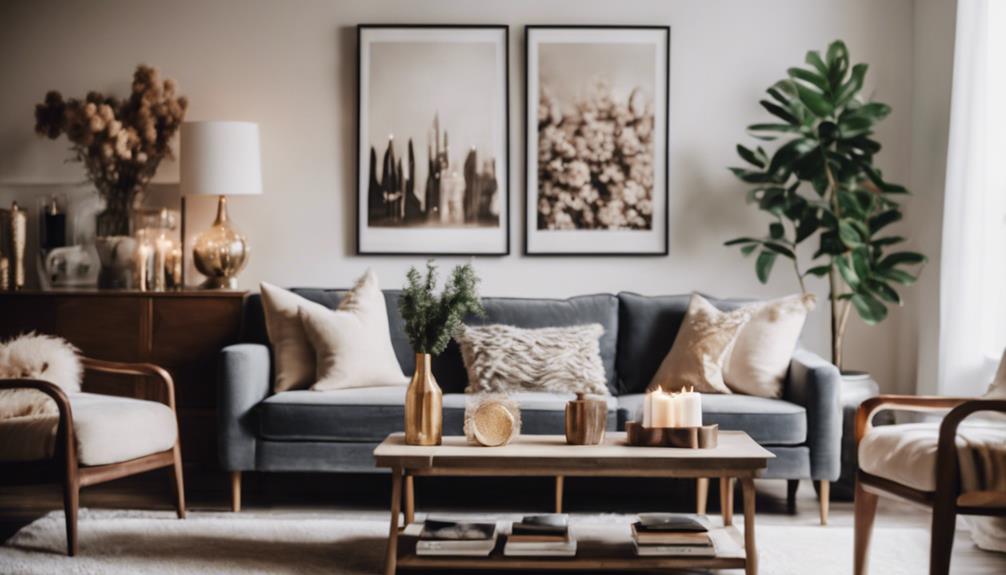You're about to transform a plain mirror into a stunning work of art. Start by preparing the mirror surface with a thorough cleaning, sketching your design, applying white gesso, and letting it dry for 24 hours. Choose the right paint for your project, whether it's acrylic, enamel, or Deco Art glass paint, and apply a base coat. From there, add your design and patterns, letting each layer dry completely before adding the next. Finally, seal your masterpiece with a clear coat and display it proudly. As you continue, you'll uncover the precise techniques and expert tips to achieve a truly professional finish.
Key Takeaways
• Prepare the mirror surface by cleaning it with a dampened microfiber cloth and applying a layer of white gesso as a base.
• Choose the right paint for your project, considering options like acrylic, enamel, or Deco Art glass paint for optimal results.
• Apply a white acrylic base coat to ensure vibrant colors and a strong bond with the paint, letting it dry for at least 24 hours.
• Use stencils, templates, and varying brush sizes to add design and patterns, experimenting with different techniques like stippling and blending.
• Seal your artwork with a clear coat, following the manufacturer's instructions for drying time, to protect and enhance the colors.
Preparing the Mirror Surface
Before you begin painting, prepare the mirror surface by thoroughly cleaning it with a dampened microfiber cloth to remove any dirt or grime that may affect the paint adhesion. This step is vital, as a clean mirror is essential for the paint to adhere properly.
Once your mirror is clean, you can start planning out your design. Take a water-soluble pencil and sketch out your design directly onto the mirror surface. This will give you a clear idea of what your final product will look like.
Next, apply a layer of white gesso to the areas of the mirror that will be painted. This will establish a suitable base for your paint to adhere to. Make sure to let the gesso dry for at least 24 hours to guarantee it fully sets and provides a smooth surface for painting.
Choosing the Right Paint
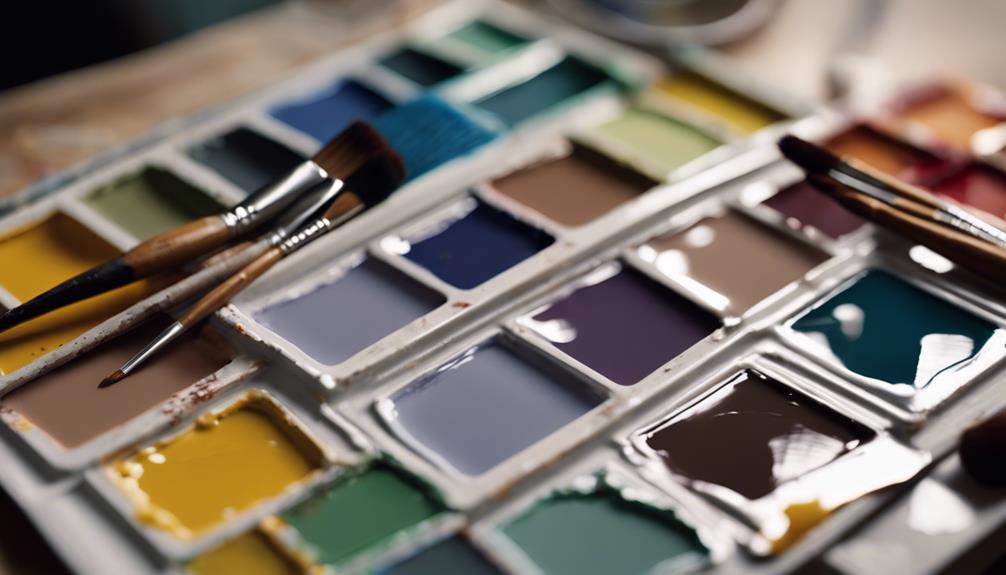
When selecting the right paint for your mirror, you'll need to take into account the type of paint, the colors you want to use, and the finish and sheen you're aiming for.
You'll need to choose between enamel, acrylic, or specialized glass paint, each with its own benefits and drawbacks. As you evaluate your options, think about the overall aesthetic you want to achieve and how the paint's finish will impact the final result.
Paint Type Options
As you prepare to paint your mirror, selecting the right paint type is essential, and you'll want to take into account the unique characteristics of acrylic, enamel, and Deco Art glass paint to achieve your desired design.
Acrylic paint, a popular choice for mirror painting, is quick-drying and versatile, making it ideal for intricate designs.
Enamel paint, on the other hand, offers durability and a softer finish, making it perfect for long-lasting mirror designs.
If you're looking for a paint specifically formulated for glass surfaces like mirrors, Deco Art glass paint is the way to go.
When choosing between acrylic and enamel paints, consider the desired finish and longevity of your mirror design.
Additionally, using a white acrylic base coat before painting can enhance the vibrancy and opacity of your design.
Paint Color Selection
Now that you've selected the right paint type, it's time to choose a color palette that complements your mirror's design and the surrounding décor.
When it comes to painting a mirror, the color selection is essential to achieve the desired look. You really want to contemplate the overall aesthetic you're going for – modern, vintage, or eclectic.
If you're looking for a clean and crisp look, white acrylic paint can be used as a base coat before adding additional colors. This will provide a solid foundation for your design.
For a softer, subtler finish, enamel paints might be the way to go. Remember, the type of paint you chose earlier will influence your color selection. Acrylic paints, like Deco Art, offer vibrant colors and durability, while enamel paints provide a softer, more subtle finish.
Take your time, and really ponder about the colors that will make your mirror stand out. With the right paint color, your mirror will be transformed into a stunning piece of art that adds personality to any room.
Finish and Sheen
Choosing the right finish and sheen for your mirror involves balancing durability, aesthetics, and personal preference. You'll need to take into account the overall look and feel you're aiming for, as well as how much wear and tear the mirror will endure.
Here's a breakdown of popular paint finishes for mirrors:
| Finish | Durability | Aesthetics |
|---|---|---|
| Acrylic Paint | Moderate | Glossy, reflective |
| Enamel Paint | High | Subtle, elegant |
| Matte Spray Paint | Low | Non-reflective, understated |
| Metallic Paint | Moderate | Unique, eye-catching |
Acrylic paint provides a glossy finish, while enamel paint offers a more durable and subtle sheen. If you desire a non-reflective finish, matte spray paint is the way to go. And if you're feeling bold, metallic paint can add a touch of glamour to your mirror. Remember to select a finish that fits your style and the mirror's intended use.
Applying the Base Coat

You'll start by applying an essential layer of white gesso as your base coat, which serves as a primer to guarantee your paint adheres smoothly to the mirror's surface. This base coat is pivotal, as it prevents the paint from peeling off the mirror surface.
By using white gesso, you're ensuring that your paint will adhere better, creating a strong bond that will last. In addition to its adhesive properties, the white gesso also creates a smooth surface for the paint to adhere to, resulting in a more even and long-lasting finish.
Before moving on to the next step, make sure to let the white gesso dry for at least 24 hours. If you're looking for an alternative, you can also use a white acrylic base coat, which will enhance the vibrancy of the colors you'll be using later on.
Adding Design and Patterns
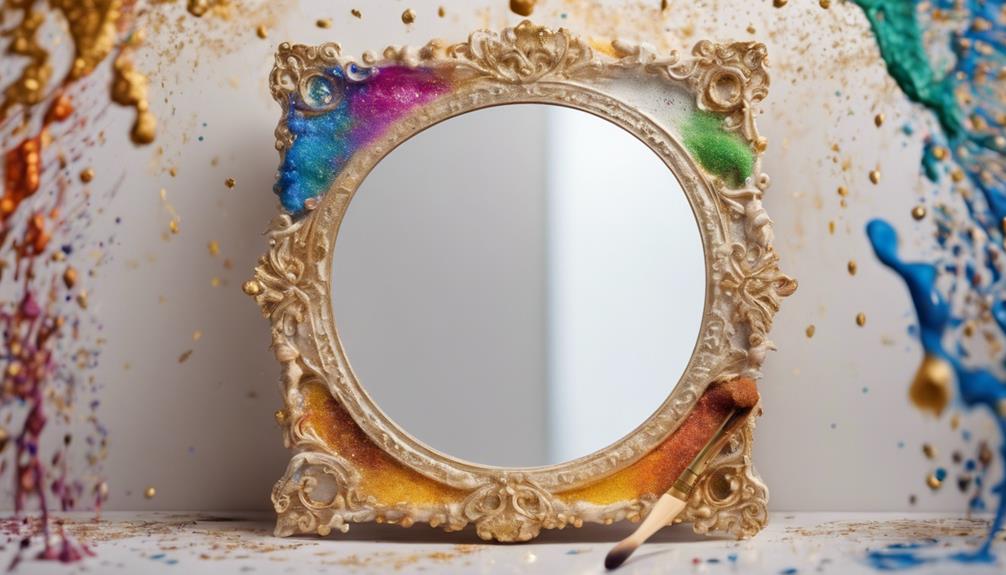
Sketch the design and patterns you want to feature on your mirror using water-soluble pencils, allowing you to easily erase and refine your composition. This step is vital in achieving the intricate designs you envision on your mirror surface.
To add more depth and visual interest, experiment with different brush sizes to create varying line thicknesses and details in your design. Consider using stencils or templates for precise and intricate patterns on the mirror.
Don't be afraid to incorporate a variety of colors and shades to enhance the visual interest and depth of your design. Techniques like stippling, blending, and layering can add texture and dimension to your painted patterns on the mirror.
Allowing the Paint to Dry
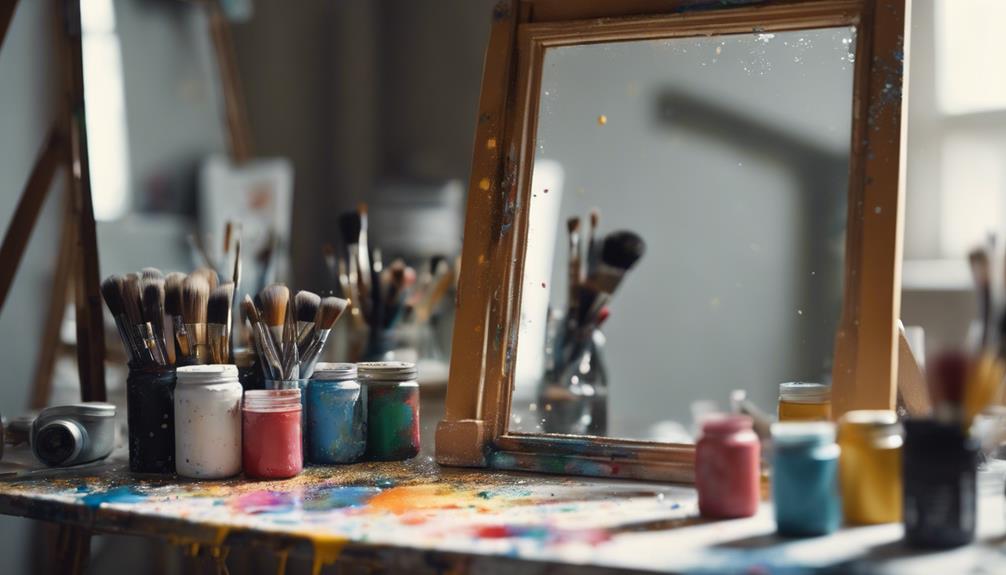
With your design carefully crafted, it's time to let your paint dry completely before adding additional coats or sealants. Proper drying time is important for a successful mirror painting project, so be patient and don't rush the process.
Acrylic paint typically dries within 20-30 minutes between coats, but enamel paint may take longer, up to several hours. If you've applied thicker layers of paint, expect a longer drying time. Make sure each layer is fully dry before applying the next coat to avoid smudging or blending colors.
Sealing the Painted Mirror
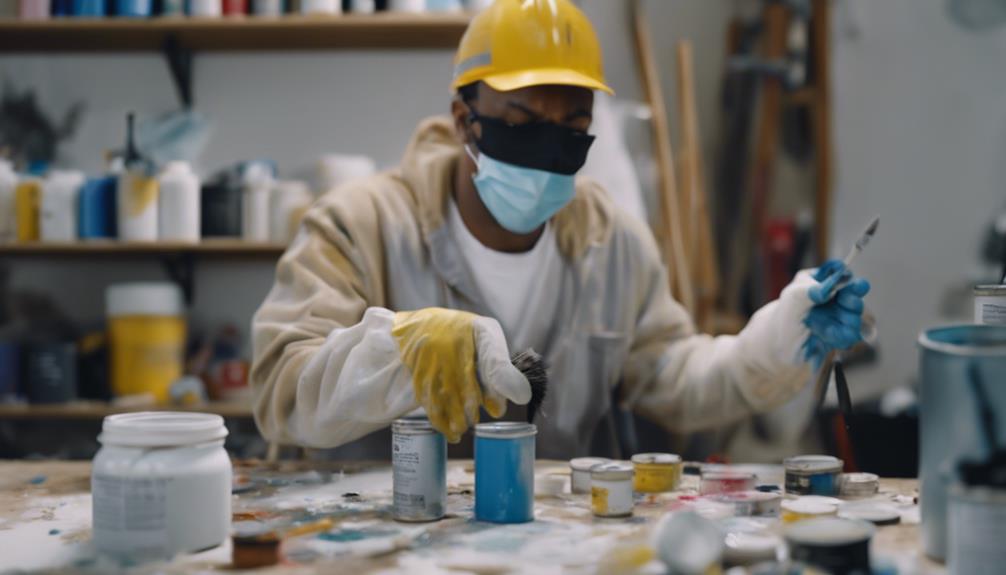
As you move forward with sealing your painted mirror, it's crucial to focus on a few critical areas to guarantee a professional-looking finish.
You'll need to pay special attention to sealing the edges, where the paint can be more prone to chipping, and take steps to prevent these issues from arising.
Sealing the Edges
Seal the edges of your painted mirror with a clear acrylic sealant to safeguard the paint and guarantee a long-lasting finish. This critical step ensures that your hard work doesn't go to waste, and your mirror remains looking great for years to come.
When applying the sealant, make sure to cover all the painted areas, including the edges, with a thin, even layer. This will prevent chipping and peeling, keeping your mirror looking fresh and vibrant.
Remember to allow the sealant to dry completely before hanging or using your mirror. A sealed mirror will have a longer-lasting and protected paint finish, giving you peace of mind and a beautiful piece of decor for your home.
Preventing Chipping Issues
You'll safeguard your painted mirror's finish by applying a clear varnish or sealant, which prevents chipping and protects the paint from damage.
To do this effectively, make sure the paint is completely dry before applying another coat or the sealant to prevent smudging or streaking.
When applying the clear varnish, use a soft cloth or paper towel to gently wipe it onto the mirror, ensuring to wipe off any excess paint for a smooth finish.
Apply the sealant in thin, even layers to maintain the integrity of the painted design on the mirror. This will prevent the paint from chipping and ensure a professional-looking finish.
Allow the sealant to dry according to the manufacturer's instructions before handling or hanging the painted mirror.
Applying Clear Coat
With your painted mirror design complete, it's time to shield your artwork with a clear coat, ensuring the vibrant colors and intricate details remain intact for years to come.
Applying a clear coat or sealant is an important step in protecting your artwork from damage and ensuring its longevity.
Here are some essential tips to keep in mind when applying a clear coat:
- Choose the right sealant: Select a sealant that's compatible with your paint type, whether it's acrylic, oil-based, or spray paints.
- Apply evenly: Use a soft cloth or paper towel to apply the sealant, preventing streaks or smudges on the painted surface.
- Enhance the finish: Sealants can enhance the colors of the paint and provide a glossy or matte finish, depending on your preference.
Removing Masking and Cleanup
As you carefully remove the painter's tape from the edges of the mirror frame, clean lines are revealed, marking the beginning of the cleanup process. You'll be amazed at how crisp and clean the paint job looks. Next, use a razor blade or craft knife to gently scrape off any excess paint on the mirror surface. Be careful not to scratch the glass.
| Task | Tool | Purpose |
|---|---|---|
| Remove tape | Fingers | Reveal clean lines |
| Scrape excess paint | Razor blade or craft knife | Remove paint from mirror surface |
| Clean mirror | Glass cleaner and microfiber cloth | Remove residue |
| Inspect and touch-up | Eyes and paint | Ensure a flawless finish |
Now, wipe down the mirror with a clean microfiber cloth and glass cleaner to remove any remaining residue. Check the painted mirror frame for any touch-ups needed and make corrections as necessary. Finally, dispose of any used materials properly and make sure the painting area is clean and organized.
Displaying Your Masterpiece

Now that your painted mirror is complete, it's time to showcase it in a location that highlights its beauty and craftsmanship. You've invested a small amount of time and effort into Paint a Mirror, so it's crucial to display it proudly.
Here are a few tips to keep in mind when displaying your masterpiece:
- Well-lit area: Hang your mirror in a well-lit area to showcase the colors and details. This will make your Spray painting a mirror project stand out even more.
- Complementary decor: Use complementary decor around the mirror to enhance its visual impact in the room. This will create a cohesive look and make your mirror a focal point.
- Ideal viewing: Position the mirror at eye level for ideal viewing and to make it a focal point in the space. This will ensure your mirror is quite the center of attention.
Frequently Asked Questions
What Kind of Paint Will Stick to a Mirror?
When it comes to painting on mirrors, you'll need a specialized paint that can adhere well to the glass surface. You'll find that acrylic paint formulated for glass, such as Deco Art, is a great option.
Enamel craft paints also work well, providing a durable and subtle finish. Whichever you choose, make sure to prime the mirror with white gesso first to guarantee the paint sticks.
How to Prep a Mirror for Painting?
As you prepare to paint your mirror, did you know that a staggering 75% of DIY projects fail due to inadequate surface preparation?
To avoid this, you'll want to start by cleaning your mirror with a damp microfiber cloth to remove dirt and grime.
Then, use a water-soluble pencil to sketch your design onto the mirror's surface.
This vital step guarantees a smooth painting process and prevents costly mistakes down the line.
How to Seal Acrylic Paint on a Mirror?
When you're sealing acrylic paint on a mirror, you'll want to use a clear acrylic sealer or varnish to protect the painted surface.
Apply the sealant in thin, even coats to prevent drips or streaks, allowing each coat to dry completely before adding more layers.
Use a soft brush or sponge to apply the sealant smoothly, and consider a UV-resistant sealant to prevent fading in direct sunlight.
What Do You Cover a Mirror With When Painting?
As you stand before the mirror, paintbrush in hand, you ponder how to cover it with something to prevent unwanted splatters.
Picture a pristine mirror, untouched by paint droplets. To achieve this, you'll need to cover the mirror's glass surface.
You can use painter's tape to create a barrier, carefully applying it along the edges to guarantee a precise fit. Alternatively, consider using paper or plastic sheeting for complete coverage.
Conclusion
As you step back to admire your handiwork, the transformed mirror seems to radiate a new energy, its vibrant colors and intricate patterns drawing you in like a work of art.
The paint's glossy sheen catches the light, casting a mesmerizing glow that adds depth and dimension to the space.
Your creativity has breathed new life into a once-ordinary mirror, elevating it to a stunning focal point that commands attention and inspires conversation.
